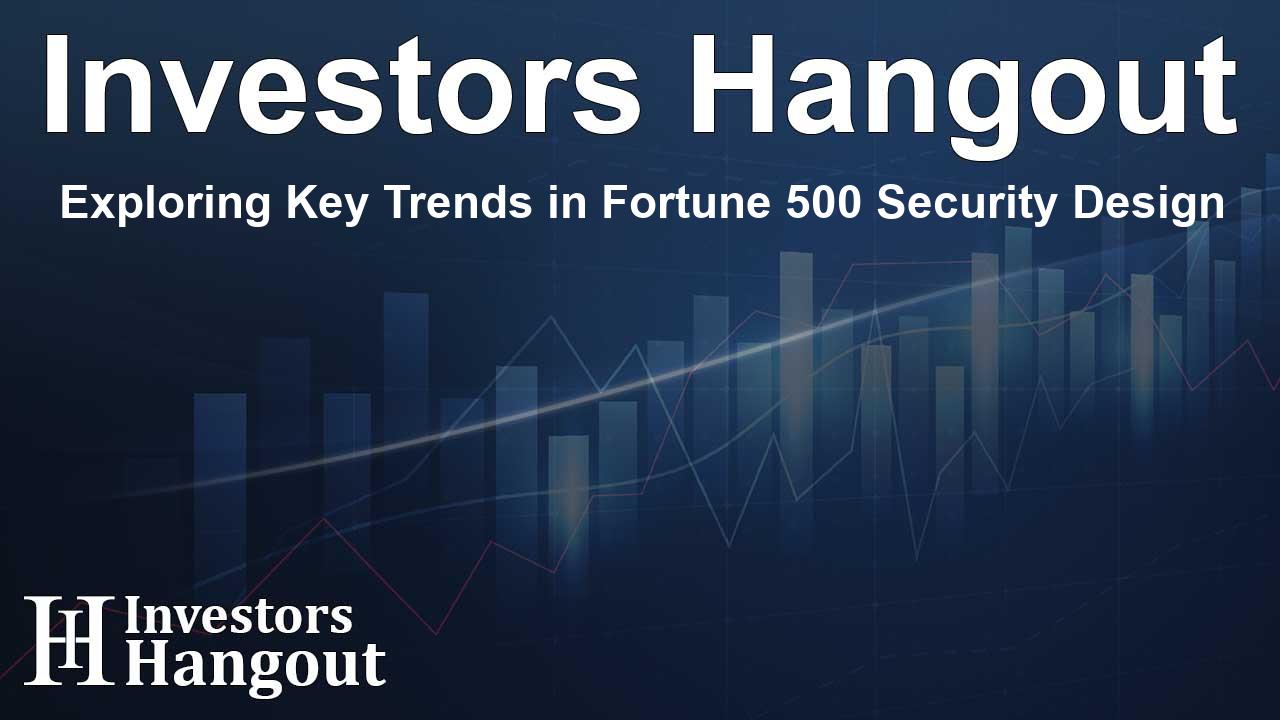Exploring Key Trends in Fortune 500 Security Design

Key Trends in Security Organizational Design
Security organizations are evolving rapidly, especially within Fortune 500 companies. Recent insights show how critical it is for these enterprises to adapt their structures and strategies to meet modern security challenges. The snapshot report released by IANS Research and Artico Search depicts emerging trends that not only highlight current practices but also forecast significant organizational benchmarks needed for cybersecurity leadership.
Understanding the Landscape
The cybersecurity landscape is shifting, and organizations must stay ahead of the curve. The report demonstrates how CISOs are tackling these dynamic changes, ensuring their security teams are structured effectively to meet both operational and strategic goals. Engaging with the report offers valuable lessons on aligning security frameworks with overarching business objectives.
Enhancing Organizational Depth
One of the standout findings indicates that successful security leadership grows in depth as enterprise size increases. Fortune 500 organizations often employ multiple leadership tiers to efficiently oversee distinct subfunctions, such as Security Operations, Governance, Risk Management, and Identity and Access Management. A remarkable trend is that over 40% of these large organizations now have a dedicated deputy Chief Information Security Officer (CISO), serving as a crucial partner in leadership, ensuring a seamless workflow and a robust succession plan.
Compensation and Industry Standards
Another critical insight from the report reveals how compensation scales alongside organizational structures. For instance, heads of Security Operations in Fortune 500 firms earn significantly higher salaries than their counterparts in smaller organizations. This disparity underscores the importance of ensuring that compensation reflects the growing complexities and responsibilities associated with larger organizations. An average cash compensation of $307,000 sets the benchmark for security roles at the highest tiers.
Engagement with Corporate Leadership
As engagement with executive leadership becomes essential, reports show that 95% of CISOs within Fortune 500 companies interact directly with their boards. This engagement is crucial for communicating the strategic importance of cybersecurity, fostering a culture of security at the highest levels of decision-making. The frequency of these meetings is also noteworthy; one-third of CISOs confront the entire board quarterly, while many coordinate regularly with committees focused on audit or risk.
The Evolving Role of Deputy CISO
The deputy CISO role is seeing a significant transformation in its function and value within large organizations. Not only do many companies appoint full-time deputies, but some also integrate these leaders into existing functional roles. This dual approach allows for nuanced leadership while maintaining clear security strategies aligned with corporate objectives. The role is growing in importance as it serves as both a tactical leader and a strategic ally for the CISO.
Embracing Managed Security Services
Moreover, the report highlights a continued robust adoption of Managed Security Service Providers (MSSPs) among Fortune 500 firms. These partnerships enhance capabilities in threat detection and response, incident handling, and network security monitoring. The reliance on external expertise reflects a growing acknowledgment of the specialized skills and resources required to navigate the increasingly sophisticated threat landscape.
Future Considerations for Security Leaders
CISOs face a multifaceted challenge. It's not merely about expanding teams; it's about constructing organizations that can withstand the test of time and adapt to unforeseen events. Current trends emphasize the need for strong, flexible structures. As businesses confront evolving threats, the need for resilience becomes paramount, guiding decisions made at every leadership level.
Frequently Asked Questions
What is the importance of the snapshot report?
The snapshot report provides critical insights for CISOs to assess and benchmark their security organizational designs against industry standards.
How does compensation differ across organization sizes?
Compensation for security leaders in larger organizations is substantially higher than in mid-size firms due to increased responsibilities and complexities.
What role does the deputy CISO play?
The deputy CISO serves as a key leader, often acting as a right-hand partner to the CISO and facilitating continuity in leadership.
How often do CISOs engage with corporate boards?
Many CISOs engage directly with their boards quarterly, ensuring strategic alignment and emphasis on cybersecurity's critical role in business.
Why are MSSPs widely adopted by Fortune 500 firms?
MSSPs provide essential capabilities for organizations, such as advanced threat detection, enabling firms to allocate resources effectively against cyber threats.
About The Author
Contact Dominic Sanders privately here. Or send an email with ATTN: Dominic Sanders as the subject to contact@investorshangout.com.
About Investors Hangout
Investors Hangout is a leading online stock forum for financial discussion and learning, offering a wide range of free tools and resources. It draws in traders of all levels, who exchange market knowledge, investigate trading tactics, and keep an eye on industry developments in real time. Featuring financial articles, stock message boards, quotes, charts, company profiles, and live news updates. Through cooperative learning and a wealth of informational resources, it helps users from novices creating their first portfolios to experts honing their techniques. Join Investors Hangout today: https://investorshangout.com/
The content of this article is based on factual, publicly available information and does not represent legal, financial, or investment advice. Investors Hangout does not offer financial advice, and the author is not a licensed financial advisor. Consult a qualified advisor before making any financial or investment decisions based on this article. This article should not be considered advice to purchase, sell, or hold any securities or other investments. If any of the material provided here is inaccurate, please contact us for corrections.
